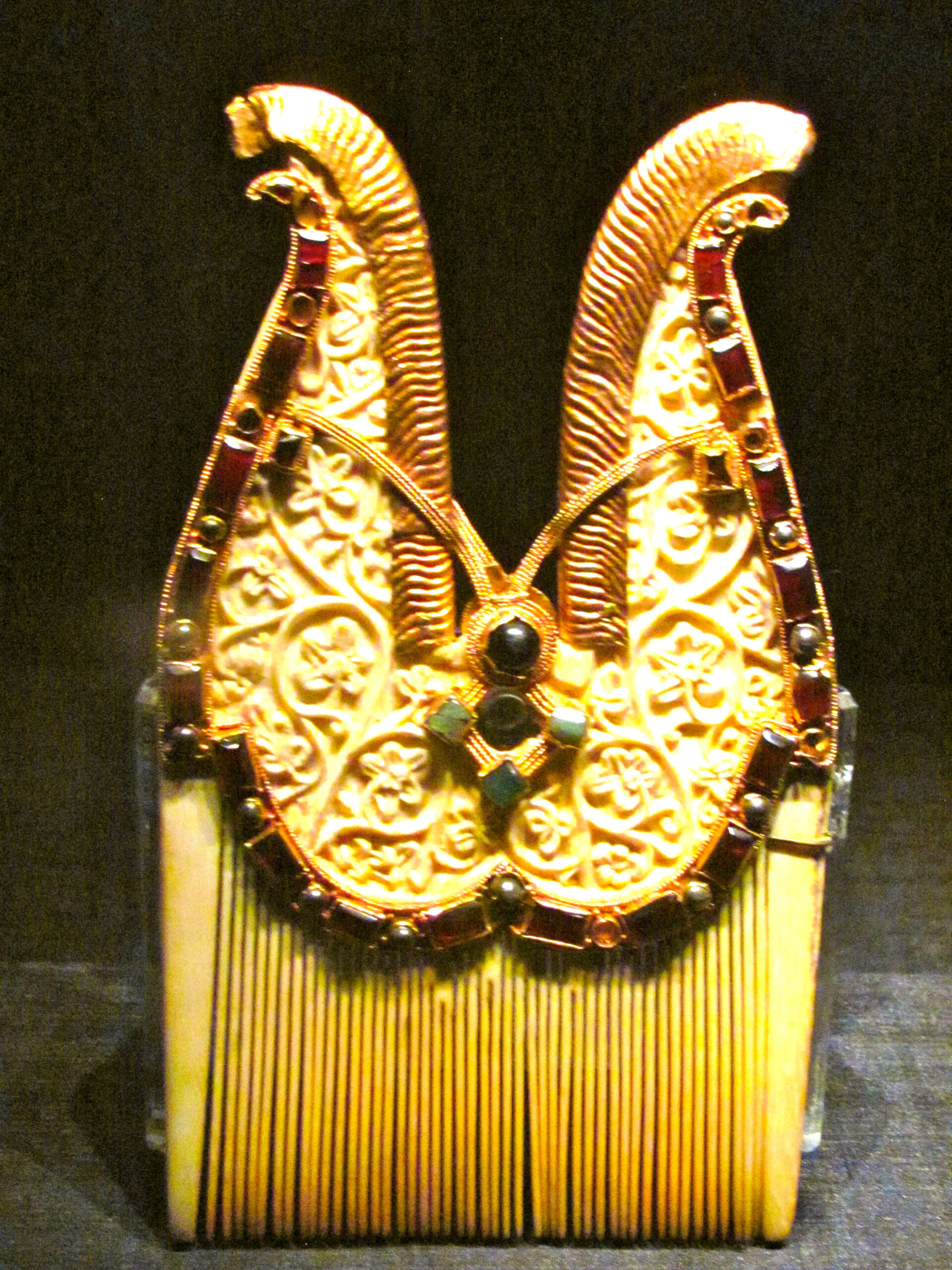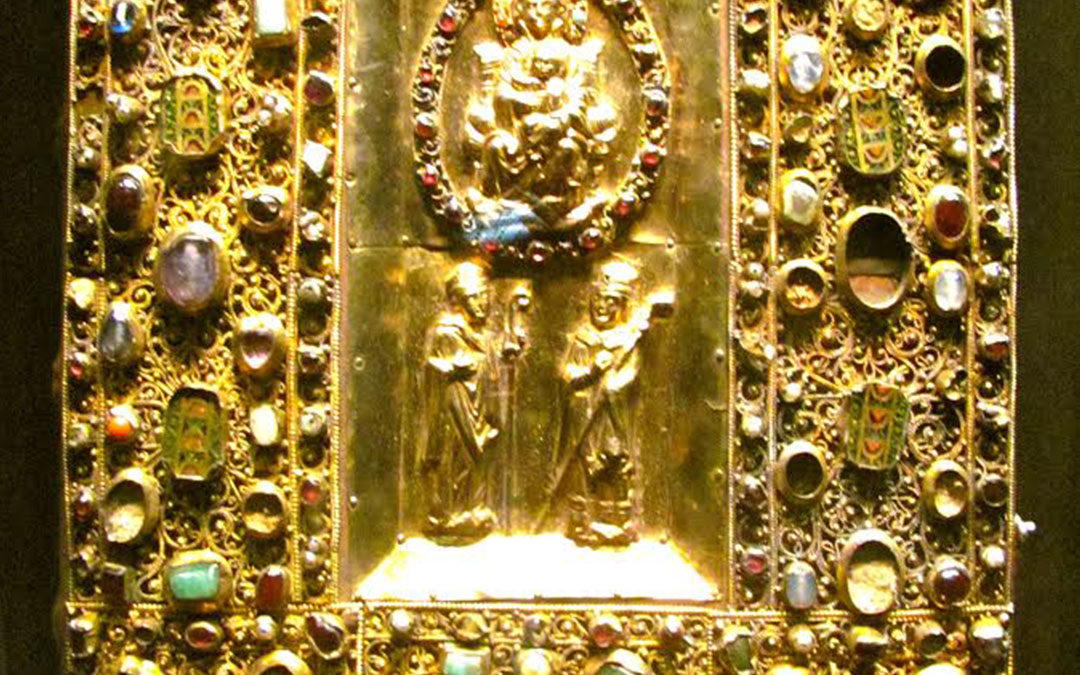The gold lettered and jewel encrusted 10th century Samuhel Gospel
Quaint Quedlinburg
This is a great story. A friend of mine was a German teacher in my hometown, Taylor, Texas, and she had just read an interesting book and gave it to me to read. However, she did not realize that this book, Treasure Hunt, by William Honan was about a World War II soldier who lived five miles from where Rick had grown up in Texas. This was the real life story of the greatest World War II art theft that had finally been solved.
But let me start at the beginning. The SS Officer of the Third Reich, Heinrich Himmler, believed that he was a reincarnation of Heinrich I, the German unifier who was buried in Quedlinburg a thousand years ago. This town was his Camelot. And this is how millions of dollars of priceless art and artifacts came to be buried in a cave outside of the town to keep them from falling into the hands of the Allies at the end of the War. An American soldier, Joe Meador, from Whitewright, Texas, five miles from where Rick grew up, was left to guard this cave after Germany fell and he decided to lift a few items, mailing them back to the U.S. in a plain brown wrapper. And there they sat for years in his attic until Joe died in 1980. Untouched. Undiscovered. Unknown.
That’s when the family found the brown wrapped items and tried to sell the priceless treasures. One artifact was the Samuhel Gospel, a gold lettered and jewel encrusted 10th century manuscript. Joe had also kept a 10th century Byzantine rock crystal flask and an Egyptian ivory comb inlaid with precious stones. A German art expert noted that the objects ranked among the three most significant medieval treasures in Germany. The attempted sale of these antiquities set off alerts in the art world, who immediately honed in on this tiny Texas town and the items which should be in a world museum. Not sitting in an attic. Or sold to the highest bidder.
These incomparable artifacts were finally returned to the Quedlinburg Castle high on a ridge in the Harz Mountains, and placed in their museum in 1991.
After we read the story and realized that this man, who lived just a few miles from Rick’s hometown, had hidden these antiquities all these years, we determined that we had to make a visit to Quedlinburg, Germany to see this magnificent find. And we did! It was a great Indiana Jones moment as we read, discovered, and sought out this wonderful story!

Egyptian ivory comb dating from the 3rd century BC


Recent Comments